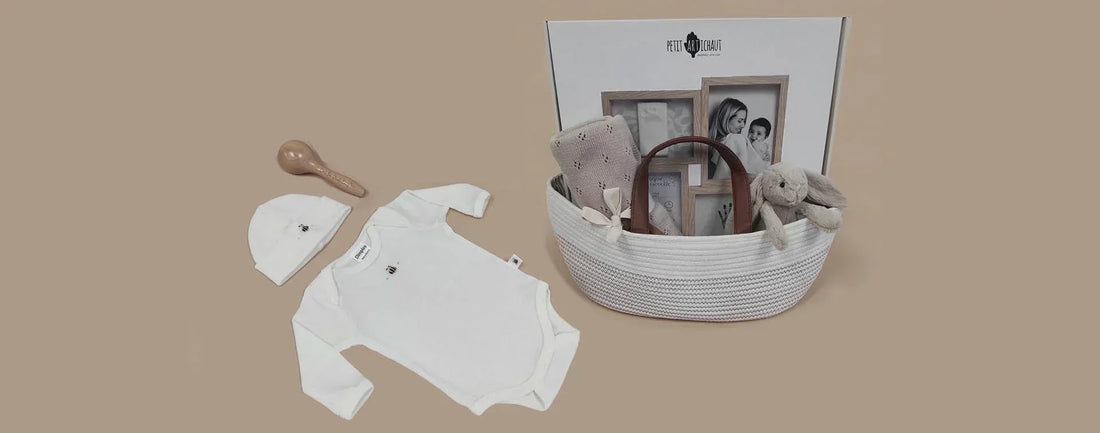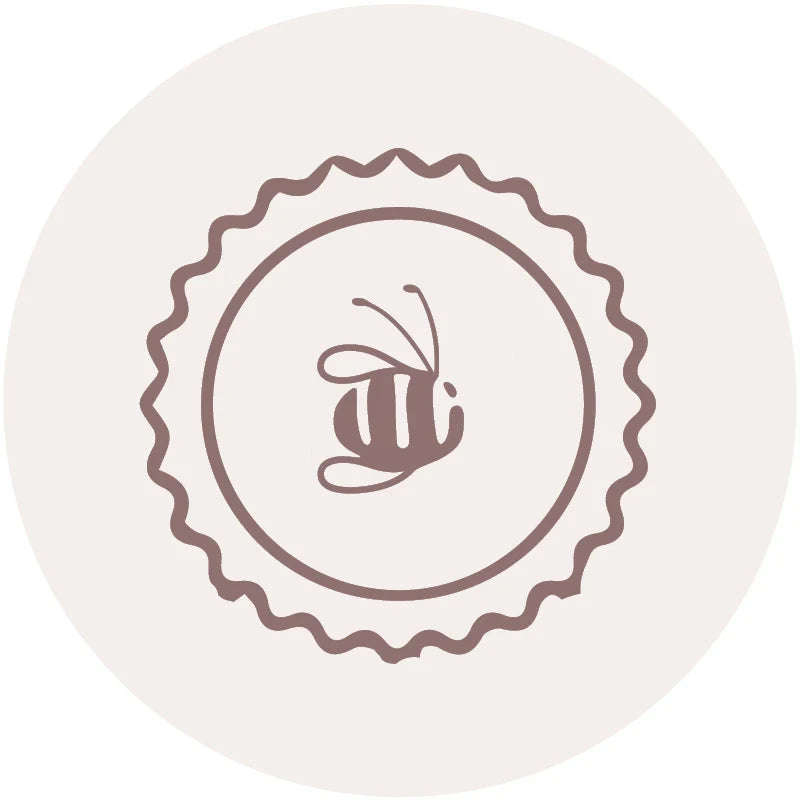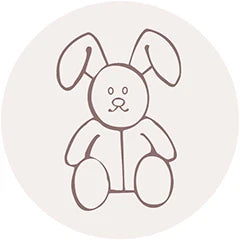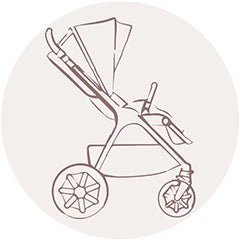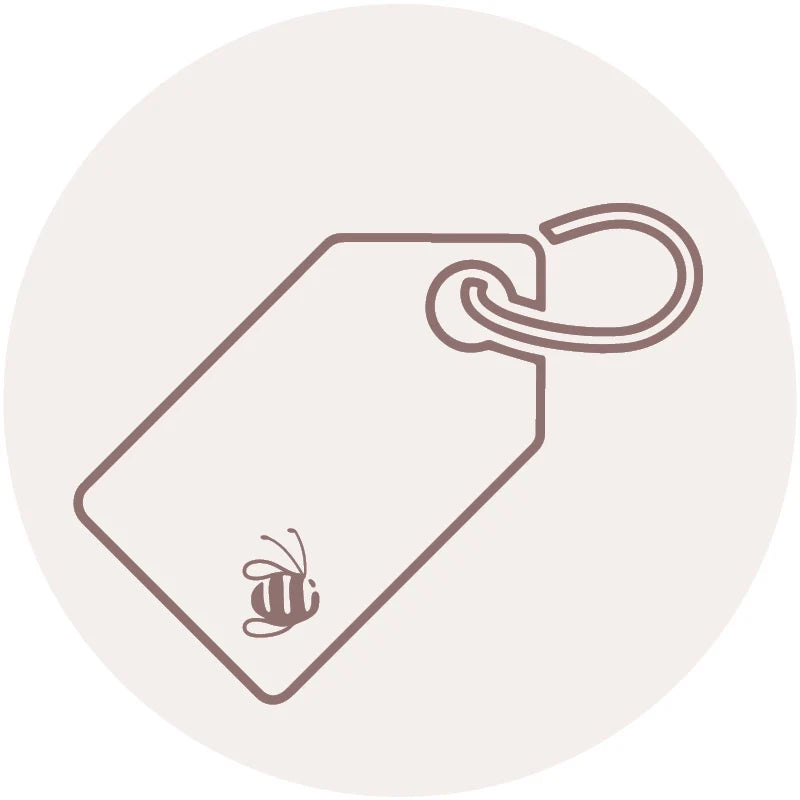Bathing your Newborn - Soothing, safe, and stress-free
Bathing your baby is not only important for hygiene reasons, it’s also a great way to calm and relax them before bedtime. But when you first get home with a tiny, delicate newborn, baths can seem daunting. Getting the water temperature right, using the right products, holding a slippery baby securely – it can all be overwhelming if you haven’t done it before.
The good news is, bathing is easy, as long as you follow a few simple safety precautions. Even better, you don’t need to bathe small babies every day. In fact, because their skin dries out so easily, too much exposure to water can actually cause irritation. Two to three baths a week is plenty for a newborn – just give them a gentle wash with a flannel on the other days.
Here’s our guide to stress-free bathing from day one:
1. Fill your bath
First, fill your bath with a few inches of warm water and place it somewhere safe and stable – the floor or kitchen bench works well. These days, there is a range of different baby baths to choose from – traditional models,
convenient Flexi baths
that pack away when you’re not using them, and the
Shnuggle bath
, which keeps baby upright in the water.
2. Test the temperature
The ideal water temperature is 37°C. Warm and soothing, but not too hot for your baby’s delicate skin. Traditionally, parents test the water with the inside of their wrist, but you can invest in a
water thermometer
if you want to be sure.
3. Get your gear
Before you undress your baby, make sure you have everything you need at arm’s reach – soft
flannels
or cloths, a
gentle body wash
, a clean
baby towel
, a fresh nappy, and
PJs
. You don’t want to be stuck trying to find something while you’re holding a wet, screaming baby.
4. Bring in the baby
Get baby undressed. Before you place them in the water, use a flannel to drizzle a small amount over the back of their head. This way, going in won’t be such a shock. Gently lift your baby into the water, with one arm under their neck to support their head – your hand should be under their arm to make sure that they don't slip down. Keep that hand in place to keep the baby’s head out of the water while your other hand does the washing. If you’re using a
Shnuggle bath
, the sloping back, and bottom bump will help keep your baby upright, you just need to keep a hand on their chest to stop them slipping down.
5. Cleanse and protect
Although some people prefer to stick to water for baby’s first few baths, it won’t necessarily be enough as your baby gets older. Even if they seem perfectly clean, sweat, skin cells, and other impurities can build up – particularly under nappies and in those chubby creases. Use a small amount of
gentle cleanser
or body wash to get rid of the grime. When their hair starts to grow, use a
baby shampoo
to keep it shiny and soft.
6. Top to bottom
Using a clean,
soft muslin cloth
, wash baby’s face and head, gently wiping around each eye, around the nose and mouth, and behind the ears. Wash theirhair with cleanser or shampoo, and don’t forget the neck – dirt can build up there. Next, gently wash under their arms, followed by tummy and legs. Finally, wash their genitals and bottom, again making sure to gently wash between thigh creases. Rinse any leftover cleanser with a clean flannel or small cup of water.
7. Time to play
If your baby is calm and the water is still warm, keep her in a little bit longer. Use a small jug or cup to pour warm water over their belly and chest, swish the water around them, and give them plenty of smiles – you want them to enjoy bath time right from the start. As they get older, you can add bath toys for them to grab as well.
8. Warm and dry
When you’re ready to take baby out of the bath, lie a soft, dry towel on a soft surface or get your partner to hold it out. Use both hands to grasp your baby around their chest, supporting the head with your fingers. Lift them out and quickly wrap him in the towel. Because babies lose a lot of heat from their heads, it’s important to dry their hair first – that’s why
hooded towels
are a great option. Use the towel or a smaller cloth to carefully dry all your baby’s folds and creases – behind the knees, around the neck, and between the toes. Any moisture left behind could cause skin irritation or redness.
9. Moisturise and protect
If your baby’s skin seems dry or irritated, now is the time to use a gentle, natural
baby oil
or
lotion
. Use a tiny amount and massage into baby’s skin, avoiding their eyes and nappy area. Before you dress them, it’s also a good idea to use a
barrier cream
to protect their delicate skin overnight.
10. Pyjama time
Finally, dress your baby in a fresh nappy and cosy PJs – bath time is done!
Extra safety tips
Think about turning your home’s hot water temperature down, to avoid scalding or burns.
Clean only what you see – don’t put anything inside baby’s ears or nose, and avoid pulling a baby boy’s foreskin.
Never, ever leave baby alone in the bath, even for a second.
Looking forward to bathing your newborn soon?
Take a look at our baby bathing section
for baths, towels, and everything else you need.
Learn more









